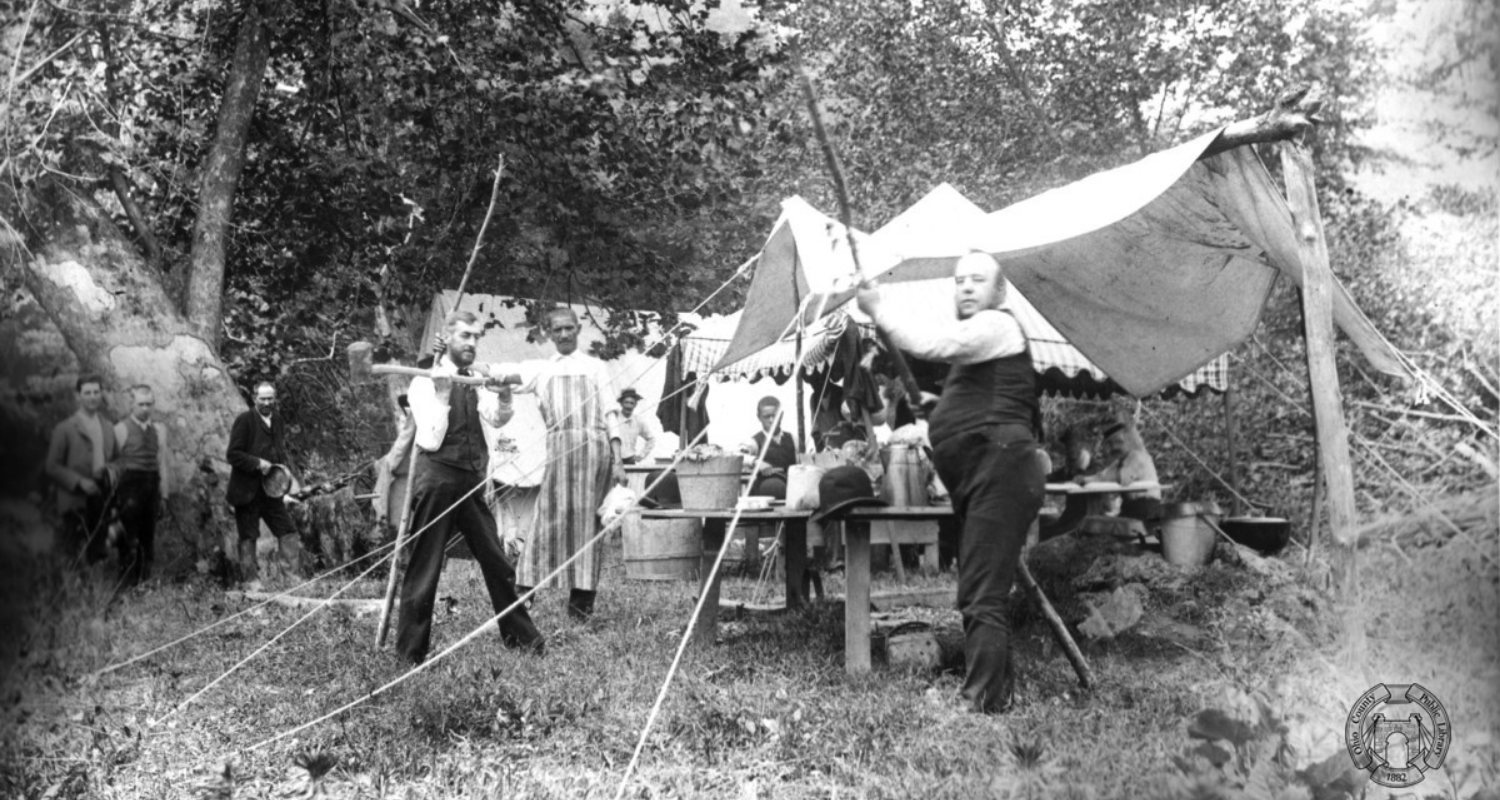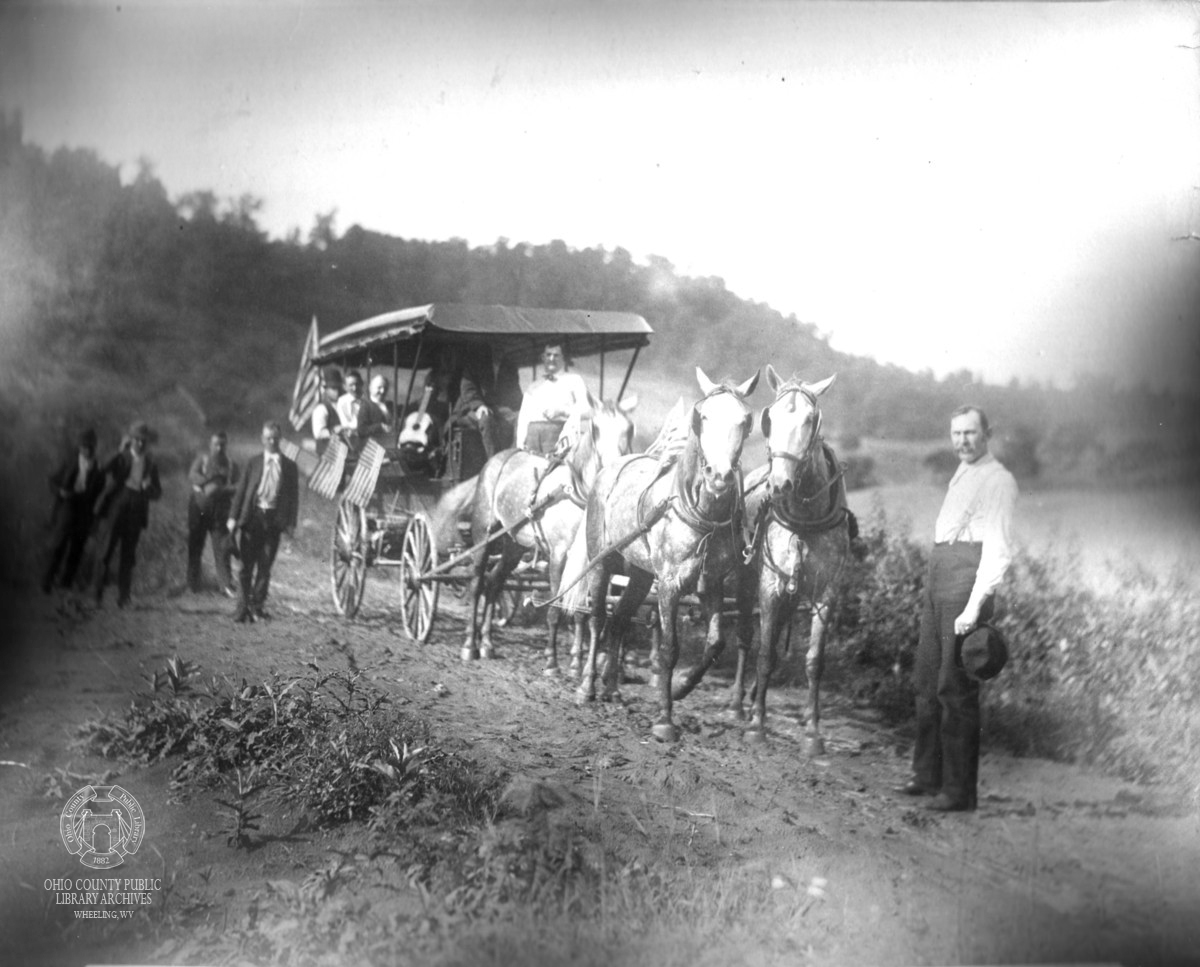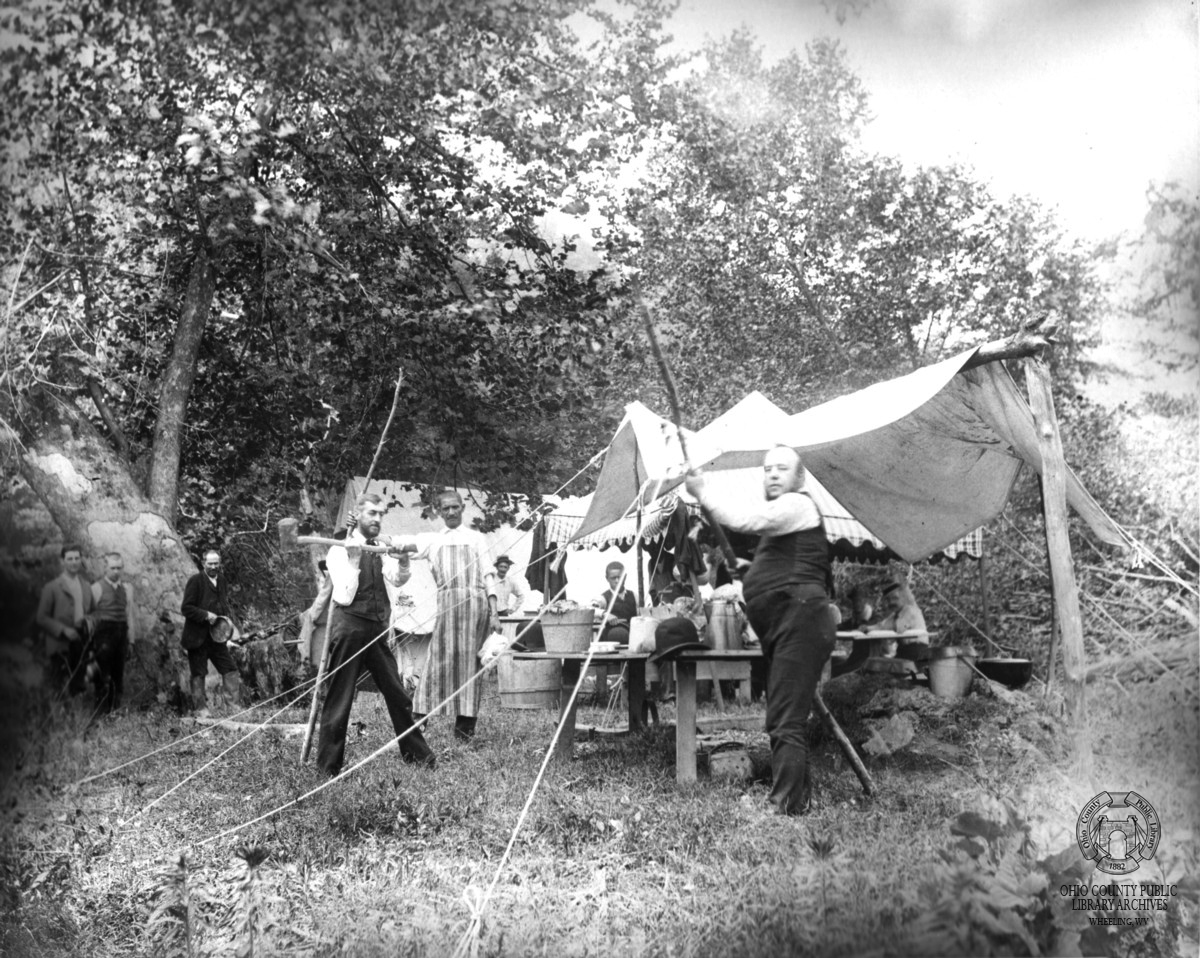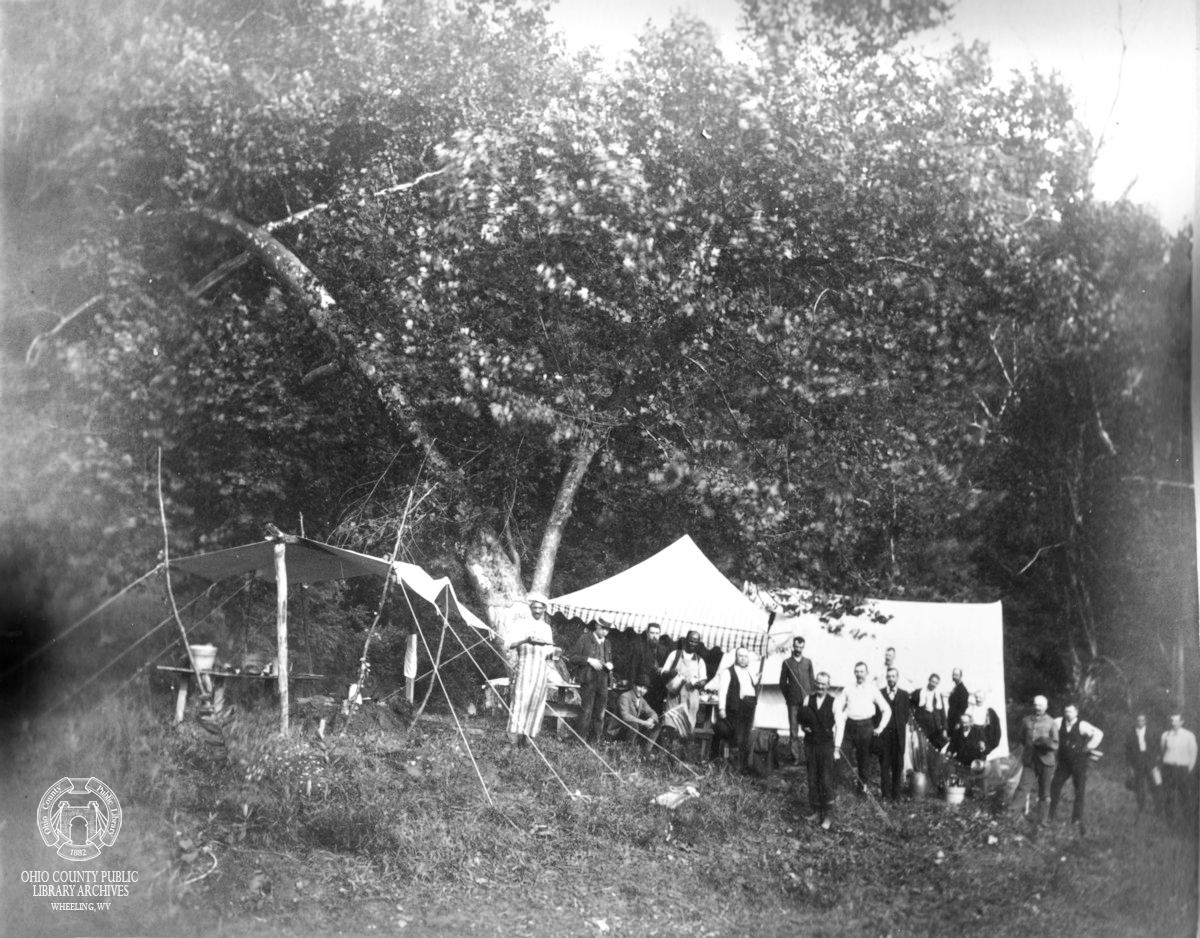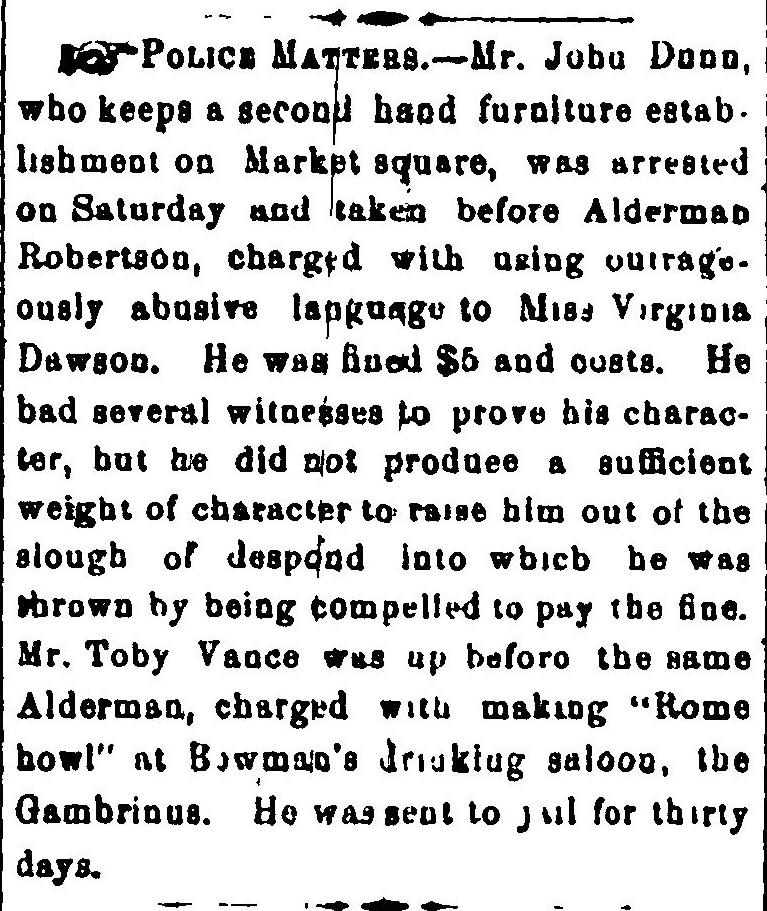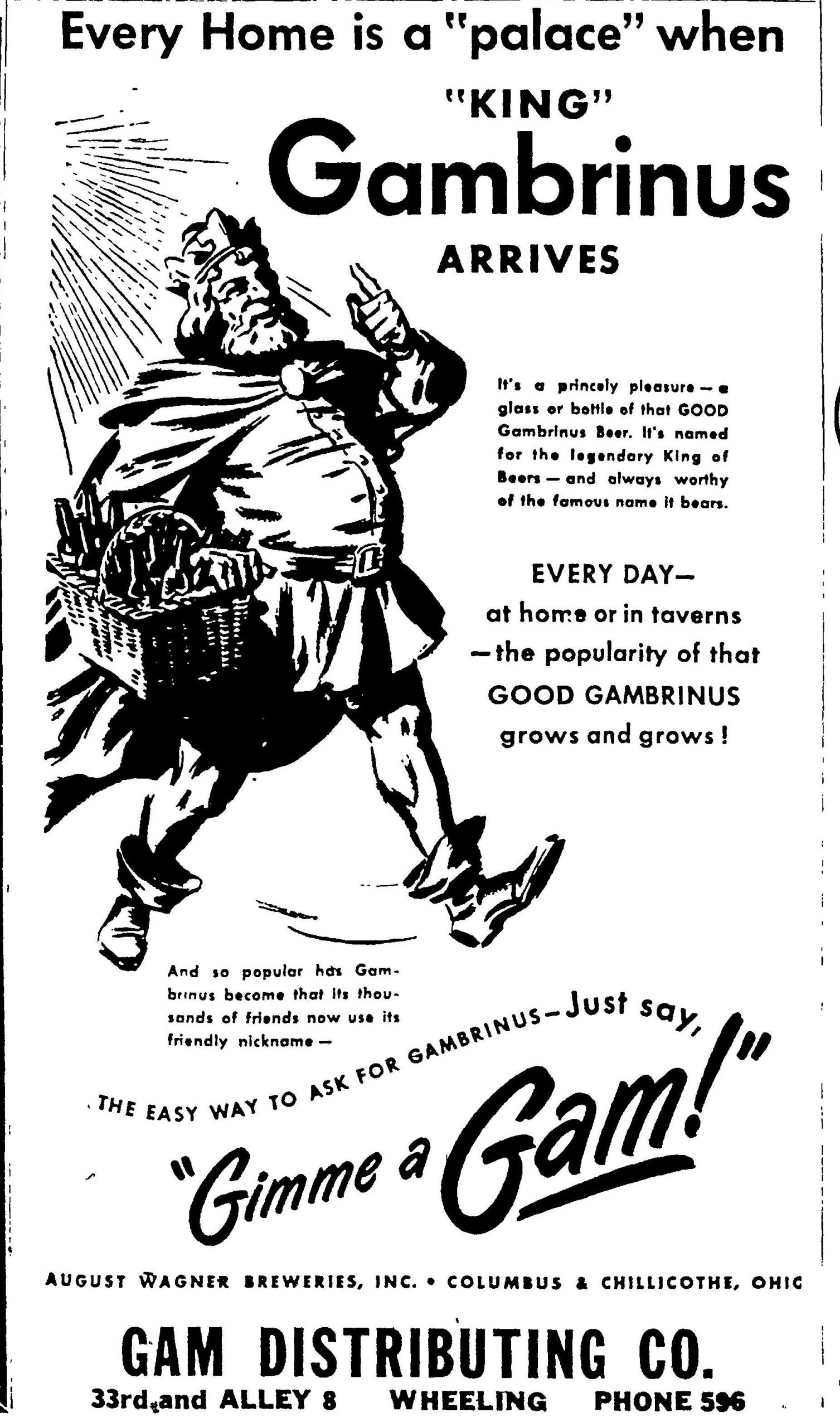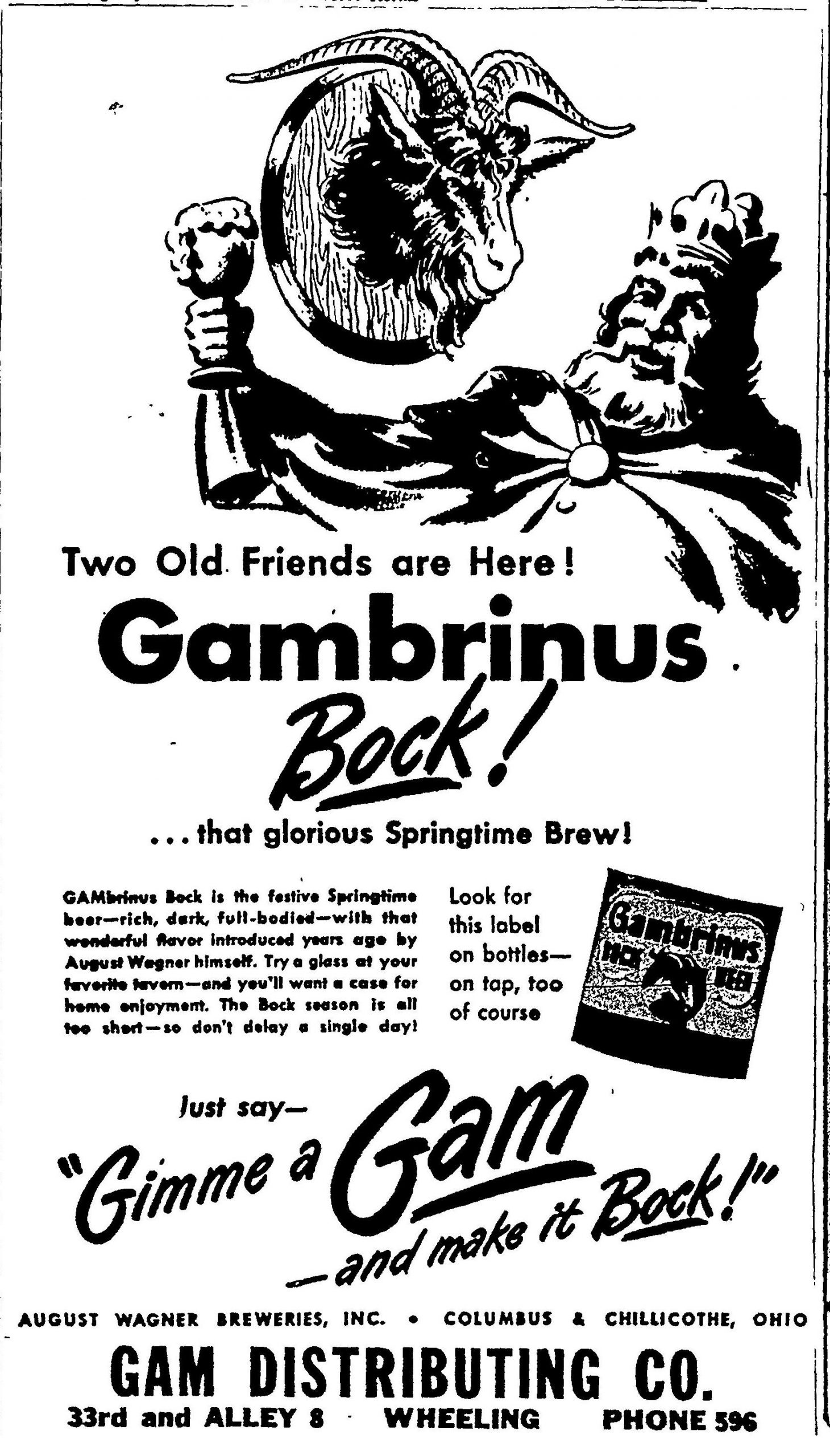Looking through the Ohio County Public Library’s Flickr page is a treat. There are photographs from nearly every era of Wheeling’s history and range from family snapshots to professional portraits to after-disaster documentation. Occasionally, there is a photo, or in this case a collection, that leaves the viewer curious for more. Among the quiet landscape photographs in the Thomas M. Darrah collection, there are a few shots of a curious group of fellows headed out on the Fourth of July. Their wagon is festooned with American flags, and a guitar sits propped up in the front. This is the Gambrinus Club’s annual trip out Wheeling Creek to the fishing grounds at Downey’s Bend.
Presumably founded around 1850 (if John Waterhouse is the fifth director of the club, as the caption indicates) the Gambrinus Club is just another product of Wheeling’s German heritage…but who is Gambrinus? Why did Wheelingites have a club named after him?
Many Faces, One Name, Much Mischief
King Gambrinus is a German folk hero of mysterious origin. Multiple theories exist as to who Gambrinus was,1 there is no question as to what he was about– beer. The lore of Gambrinus reveals that was the man who first introduced hops (Humulus lupulus) to the beer brewing process.2 Hops don’t just add flavor and bitterness to the beer, but also act as a preservative, helping beer stay fresher longer. This act arguably elevated beer from a fermented grain beverage to something we are more familiar with today.
Looking in old Wheeling newspapers for clues about the club, the only mention of Gambrinus in the Wheeling papers of the 1850s was in an article picked up and translated (presumably from German) from Cincinnati newspapers.3 The article, titled “The Ruinous Use of Beer among the Germans” took issue that many of the German festivals were overshadowed by excessive beer drinking. It went on to acknowledge that bringing it up the concern with these beer-drinkers would be a problem, acknowledging the “indissoluble bondage with Gambrinus” would take offense to any suggestions of cutting back.
Beyond being man and myth, Gambrinus was also a place in Wheeling. In early February 1864, a Mr. Toby Vance was sent to jail for thirty days for making “Rome howl” (a slang term meaning he caused a great disturbance) at the Gambrinus Saloon.4 Just a few weeks later, “a number of soldiers” broke into the same saloon and “freely partook of the liquors.”5 Sounds like quite the place!
Nearly 100 years after the time of the Gambrinus Saloon, the beer king made his way back to Wheeling via Gam Distributing. Gambrinus Brewery opened in Columbus in 1909 and was the only brewery in the city that managed to operate through the Prohibition era by focusing on non-alcoholic beverages.6 In addition to their Columbus and Chillicothe operations, they had a distribution warehouse on 33rd street in Wheeling.
See the blue triangular building on the rail line? The building is labeled as “Beer Warehouse,” so it’s safe to assume that was Gam Distributing Co. It’s interesting that they chose to set up shop in the shadow of the former Schmulbach brewery. Gam Distributing’s time in Wheeling was short, with the company being voluntarily dissolved in 1966. 7
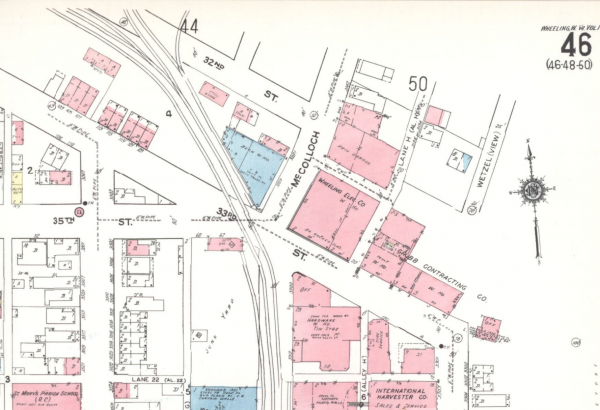
Now that we know a little bit more about the lore of Gambrinus, what do we think of the Gambrinus Club? Were they an early homebrewers club? Were they professionals, working at some of the early breweries in Wheeling? Were they just some merry dudes who liked to drink beer? Either way, they look like a fun group of guys. To honor this quirky footnote of Wheeling history, we suggest raising a glass of beer at your favorite local brewery. Prost!
References
1 Herman Schluter, the brewing industry and the brewery workers movement in America. International Union of United Brewery Workmen in America. 1910. [pdf]
2 “King Gambrinus: The Man, the Myth, the Legend.” Cincinnati Brewing History
3 The Wheeling Intelligencer, Wheeling, West Virginia. July 2, 1859
4 Wheeling Intelligencer, February 9, 1864
5 Wheeling Daily Register, February 26, 1864
6 “August Wagner Brewery and the King Gambrinus Statue.” Columbus Metropolitan Library. https://digital-collections.columbuslibrary.org/digital/collection/ohio/id/10556
7 “Gam Distributing Co., Inc.” West Virginia Secretary of State– Business and Licensing. Accessed May 10, 2022 https://apps.sos.wv.gov/business/corporations/organization.aspx?org=57444
• Kate Wietor is currently studying Architectural History and Historic Preservation at the University of Virginia in Charlottesville, Virginia. She spent one glorious year in Wheeling serving as the 2021-22 AmeriCorps member at Wheeling Heritage. Since moving back to Virginia, she’s still looking for an antique store that rivals Sibs.


